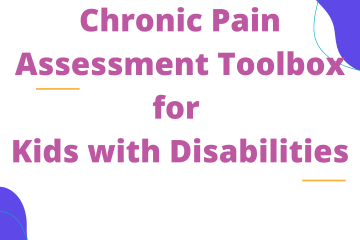Understanding pain evaluation in cerebral palsy
Hi, I'm Dr. David Roye, and I'm the Chief Medical Officer of the Weinberg Family Cerebral Palsy Center at Columbia University. Pain in people with cerebral palsy is very common, and probably not evaluated frequently enough. Just a quick story about one of my young adult patients who told me "I thought I was supposed to feel this way. I thought everybody felt this way." No one had ever talked to him about it, and therefore it wasn't treated. We need to be asking about pain all the time, when we see our patients with cerebral palsy. They have pain in their hips, commonly, and that's caused by abnormal tone and wear and tear that occurs because of just normal activities of daily living.
Also, the knee joint is particularly vulnerable in patients who have spastic quadriceps and spastic hamstrings, and then the foot and ankle take a beating in daily life in patients that have spasticity or other abnormal muscle movements. There's also upper body pain. That pain can occur in the shoulder, because patients are using their shoulders to drive their wheelchair. The elbow can be painful, along with these small joints of the wrist and hand, because of difficulties in doing activities of daily living, and that abnormal muscle tone. We shouldn't forget the back. The spine is a major source of pain in typically developed individuals, and it certainly is a source of pain in patients with CP.
The most important part of the process is asking about pain, and identifying the sites of pain, because we have ways of dealing with it. We can alter tone, using medications. We can use pain relievers. We can use physical therapy. But if those techniques don't work, we have other are ways of treating patients. We can do surgery to correct deformity. We can do surgery that lengthens muscles and changes tone in that way. We have neurosurgery that we can do too, that helps relieve pain. One out of two individuals with cerebral palsy has pain. Pain may be a part of the life of a person with cerebral palsy, but we need to be doing everything we can to lessen the impact of that pain on that life.
"The most important part of the process is asking about pain, and identifying the sites of pain, because we have ways of dealing with it."




